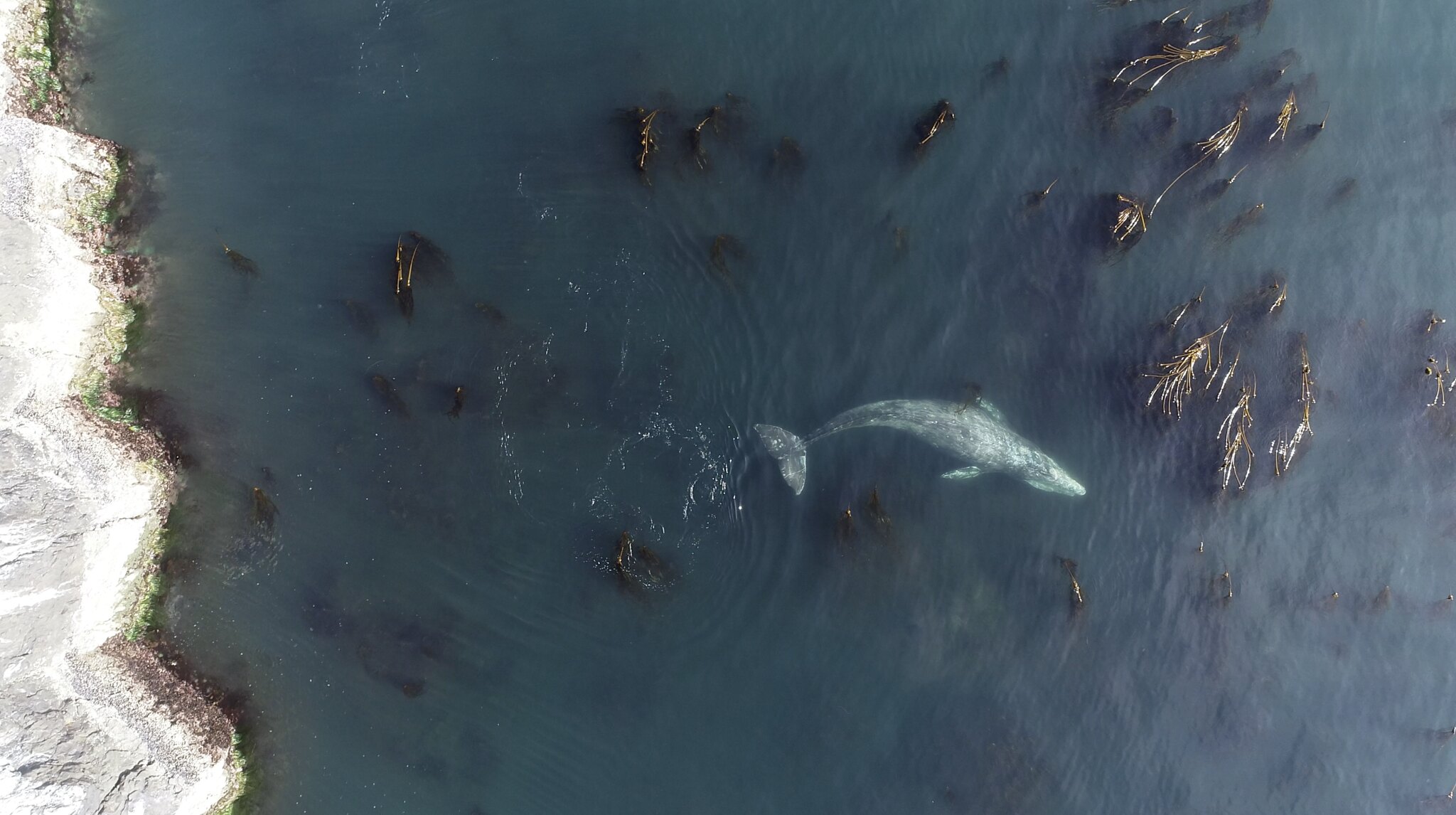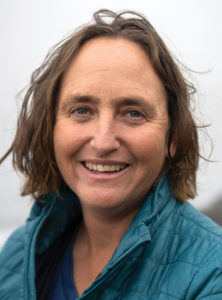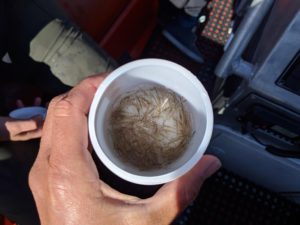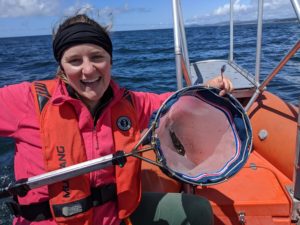
By SEAN NEALON/OSU News Service
NEWPORT — Oregon State University researchers estimate that gray whales feeding off the Oregon coast consume up to 21 million microparticles per day, a finding informed in part by poop from the whales.
Microparticle pollution includes microplastics and other human-sourced materials, including fibers from clothing.
The finding, just published in the journal Frontiers in Marine Science, is important because the particles are increasing rapidly and predicted to continue doing so, according to researchers Leigh Torres and Susanne Brander.
Microparticle pollution is a threat to the health of gray whales, in addition to obstacles related to increased boat traffic and loss of prey.

“These are quite scary numbers,” said Torres, an OSU associate professor and co-author of the paper. “I think they should raise concern for people who care about the marine environment or about their own environment and exposure to microplastics.”
Brander, also an OSU associate professor and study co-author, said the findings reinforce the need to curb the release of microparticles because of the adverse impacts they have on organisms and ecosystems.
Studying local whales
The study focused on a subgroup of about 230 gray whales known as the Pacific Coast Feeding Group. They spend winters in Baja California, Mexico and migrate north to forage in coastal habitats from northern California to southern British Columbia from June through November.
Since 2015, Torres, who leads the Geospatial Ecology of Marine Megafauna Laboratory in the OSU Marine Mammal Institute in Newport, and her team have used drones and other tools to study the health and behavior of this subgroup of gray whales off the Oregon coast. As part of this work, they collect poop samples from the whales.

For the new study, the researchers collected zooplankton, which are an important food supply for gray whales, and commercial and recreational fish.
Reseachers analyzed the microparticle loads in 26 zooplankton samples collected from whale feeding areas and found microparticles in all of them. A total of 418 suspected microparticles were identified, with fibers accounting for more than 50 percent of them.
Torres and doctoral student Lisa Hildebrand then combined that data with known estimates of energetic requirements for lactating and pregnant female gray whales to quantify how many zooplankton and microparticles they consume in a day. That yielded estimates that lactating and pregnant whales consume between 6.5 million and 21 million microparticles per day.
“It’s a wake-up call that whales are getting that much microplastic from what they eat,” Torres said. “It’s likely that humans are also getting a lot of microplastics from our own fish diet.”
Torres notes that the microparticle consumption estimates are likely conservative because they only account for what the whales consume from zooplankton.
Gray whales likely ingest more microparticles directly from the water and seafloor sediment because they are filter feeders that engulf large amounts of water while consuming prey and also use suction feeding to obtain prey from the seafloor.
Collecting whale poop

Analysis of the poop samples provided a window to what kind of microparticles these gray whales were digesting. The researchers analyzed five poop samples and found microparticles in all of them. Similar to zooplankton, the majority of the microparticles were fiber.
The researchers also found that the microparticles in the poop were significantly larger than those found in the zooplankton, leading them to believe the larger particles came from the water or sediment, not the prey which were too small to consume the larger particles.
The findings raise concerns for Torres, whose past research has shown that this subgroup of gray whales is skinnier than other groups of gray whales.
“These whales are already stressed out with boats driving around all the time and the risk of getting hit by one of those boats,” she said. “They might also have less prey around because of changes in the environment, like less kelp. And now the quality of the prey might be poor because of these high microplastic loads.”
Brander and Torres are continuing their investigations by studying the effects of microfibers on zooplankton that are an important food source for whales and fish in Oregon waters.
“That all can lead to being poorly nourished and having poor health,” Torres said, “That can lead to stunted growth, smaller body size, lower ability to have calves and animals not using this habitat anymore. All of those are areas of significant concern.”




















